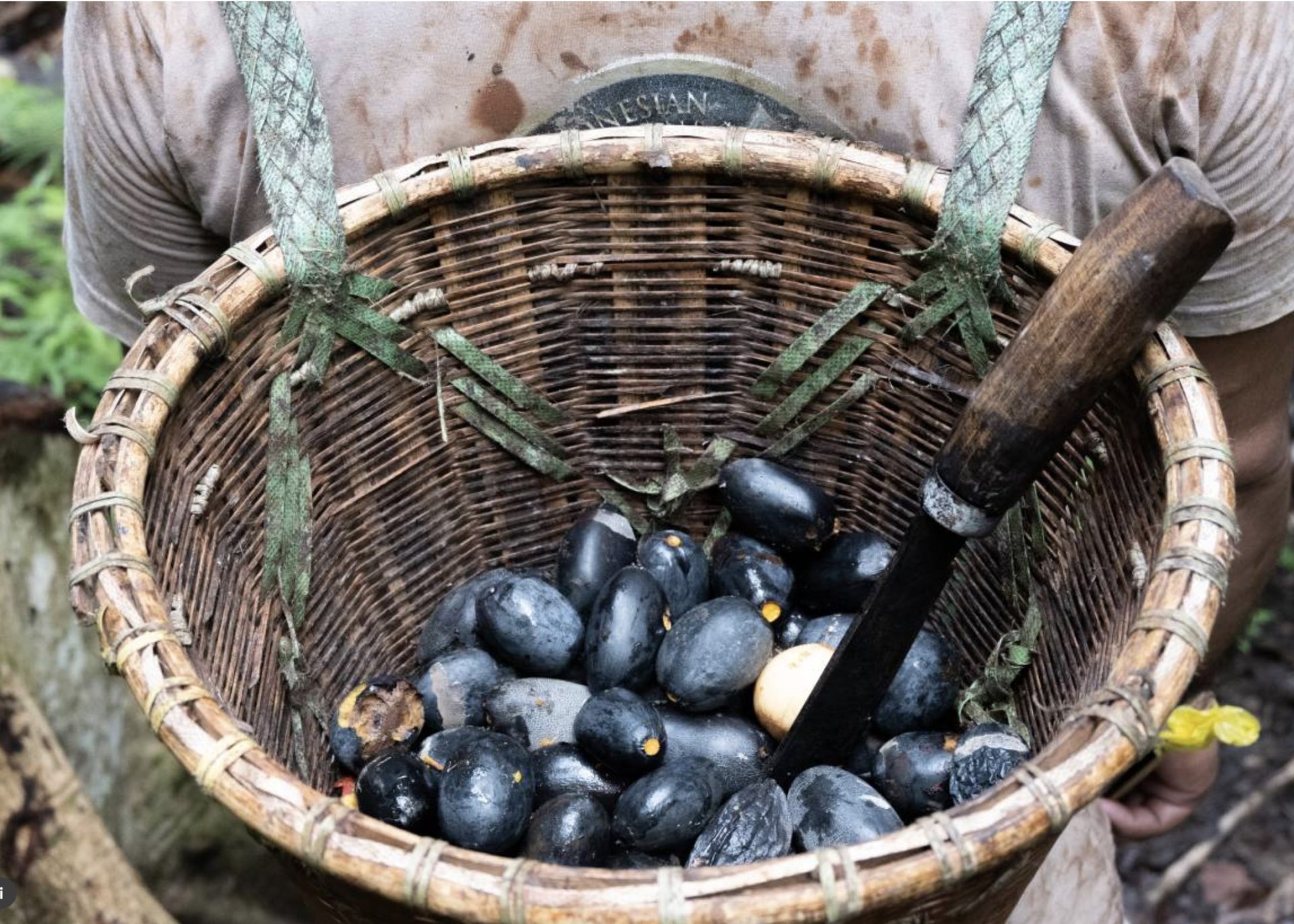Farmer Musdi Siraju, 19, picked his way down the steep, slippery mountainside in bare feet, on his way to a grove of coconut palms, canarium and nutmeg trees where he works every day to support his family on eastern Indonesia’s Makian Island.
In 1512, colonial Portuguese traders, followed later by the Dutch and the English, descended on Makian and the other Moluccas – once known as the Spice Islands for their abundance of nutmeg and cloves – to exploit their rich natural resources.
Today, people in Musdi’s home village of Sebelei are earning more from what grows here, under an emerging economic model the government hopes can boost rural livelihoods while safeguarding natural landscapes in the world’s largest archipelagic nation.
Through an enterprise set up by the village authorities, residents are harvesting and selling kenari – mineral-rich nuts that grow from century-old trees some 30 meters high.
“Back then, they came to take spices with violence,” said village head Samiun Asari, 60. “Today we have self-determination.”
The kenari nut, also known as pili, is versatile. Islanders eat it raw, blend it with sugar, bake it and add it to coffee, among other uses.
Until recently, it was traded only locally as a food staple, keeping prices low for hundreds of farmers like Musdi.
But since 2019, a partnership with Jakarta-based food company Timurasa Indonesia has allowed the farmers to increase production and spur demand for the little-known forest product.
“Very few people (even) in Indonesia know about the kenari nut,” said Timurasa co-founder Erdi Rulianto.
The enterprise kicked into a higher gear in August, when Timurasa put in an order for 500 kg, its largest yet.
Erdi hopes to start exporting kenari nuts to Europe from next year. “People think of almonds and cashews, but this product is overlooked,” he told the Thomson Reuters Foundation.
Model villages
More than one in four rural people in Indonesia’s under-developed eastern region live in poverty, government data shows.
That means many youth in the Molucca Islands, a region racked by sectarian violence at the turn of the century, see migration as the route out of subsistence, Samiun said.
In the last two years, the village head has signed papers to change the domiciles of more than 50 young inhabitants to allow them to take up work elsewhere.
“They go, but with a heavy heart,” he said.
Last year, Indonesia recorded its first recession since 1998, as the COVID-19 pandemic saw unemployment surge and pushed the poverty rate above 10% for the first time since 2017.
Under its medium-term development plan, the government wants to reduce poverty to 7% by 2024.
As part of that effort, it aims to establish about 75,000 village-owned enterprises like the one in Sebelei over the next three years, said Dani Usadi, who specialises in high-value products at the ministry of villages and development.
So far, about 42,000 have been set up, Usadi noted.
The Sebelei project includes funding for six small greenhouses, where kenari nuts stacked on aluminium trays dry in a day or two – faster and better than the traditional method of leaving them on the roadside.
The nuts are then loaded onto boats bound for the port of Ternate, from where they are flown to Indonesia’s capital Jakarta to be packaged into retail products.
Wastage due to moisture in transit has halved since the greenhouses began operating, while a planned shift from air freight to shipping containers could cut logistics costs by 60%, said Erdi at Timurasa.
Hardy Yasim, another member of the village-owned business in Sebelei, said the project should enable his family to afford books and uniforms when his children start school.
Last year, Hardy earned about 500,000 rupiah ($35) per month on average, but he hopes efforts to stock kenari on shelves further afield could see that rise to 2 million rupiah.
“We will be more secure,” he said.
Government support
Driven largely by the expansion of oil palm and mining permits, North Maluku province, where Makian Island lies, has lost nearly 7% of its old-growth trees in the last two decades, according to the Global Forest Watch monitoring service.
Tropical forests play a vital role in slowing climate heating, storing 250 billion tonnes of planet-heating carbon in their trees alone – equivalent to 90 years of global fossil-fuel emissions at current levels, according to a 2020 study published in the journal Nature.
Forestry scientists say low productivity among small-scale farmers growing everything from oil palm to coffee means many have had to clear land to earn enough for their daily needs.
But as projects like that in Sebelei boost incomes, they could also ease pressure on forests in some areas – with proper government support, said Ani Adiwinata Nawir, a scientist at the Center for International Forestry Research.
Nawir, who has worked with village enterprises in eastern Indonesia, said communities also needed more access to extension services, business training and post-harvest technology.
That would allow farmers to improve yields from existing trees rather than opening up new land to plant more, she said.
It is too early to know how successful Indonesia’s sustainable forest economy plan will be longer term, but the extra income has already helped Musdi keep his family together.
He had been planning to leave home to seek work, until his father died last year and he knew he would have to stay to support his mother and two younger siblings.
The village enterprise made that decision easier, he said.
“After (it) started, I didn’t have that desire to leave any more,” he said.
(Reporting by Harry Jacques, Editing by Jumana Farouky and Megan Rowling for the Thomson Reuters Foundation, the charitable arm of Thomson Reuters.)






